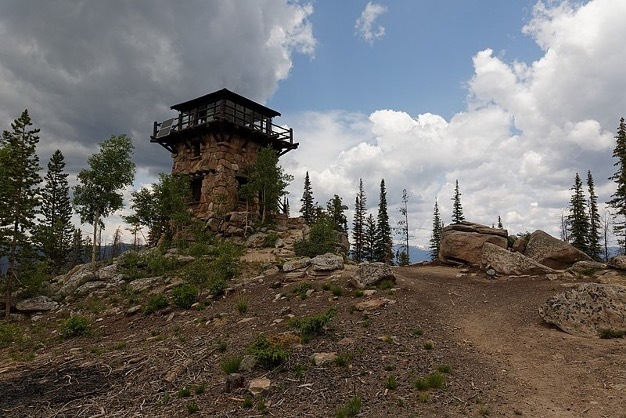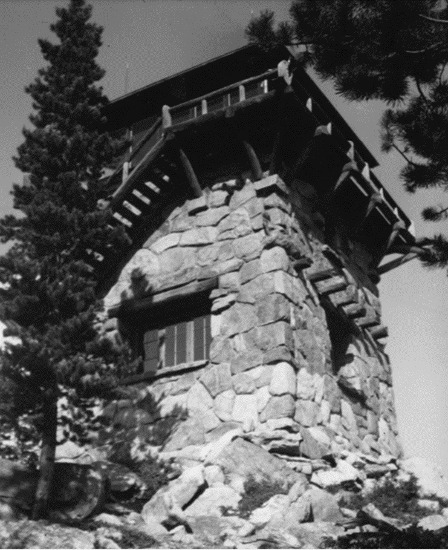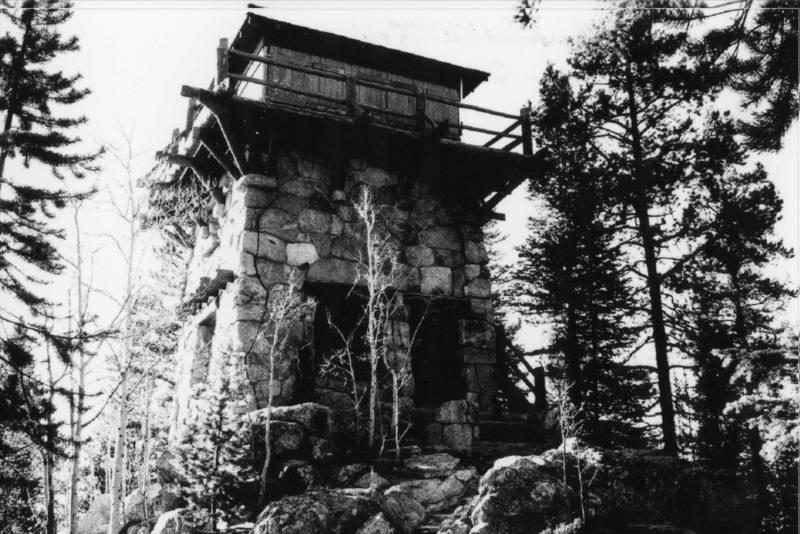Shadow Mountain Lookout

This prime example of “parkitecture” offers both great views and rich architectural history.
By the beginning of the twentieth century, the environment had become an increasingly contentious topic. Led by President Theodore Roosevelt and Chief of the Forest Service, Gifford Pinchot, the conservation movement put utilitarian environmental protection at the front of the American public’s collective mind. The conservationist fervor was especially present in Colorado. This encouraged Congress to grant the Mesa Verde cliff dwellings, located in southwestern Colorado, status as a National Park in 1906. One central Colorado local and avid naturalist, Enos Mills, made it his mission to advocate for park status for a pristine set of peaks along the Rocky Mountains. After Mills campaigned for years, President Woodrow Wilson signed Rocky Mountain National Park into existence in 1915.
From the park’s beginning, wildfire suppression was a top priority. During the park’s first decade, rangers used high mountain tops to monitor the surrounding forests. In 1924, one ranger established a crude and difficult trail to the top of Shadow Mountain to be used for fire surveillance. However, the trail was far too rugged, and in 1930 the Park developed a trail from a nearby lake to the peak of the mountain. The lakes surrounding the peak were popular tourist destinations, and Park visitors soon took to scaling the trail to enjoy the views from the top. This early lookout consisted of little more than a telephone wire running down the steep mountainside and a campsite. The bare site proved successful, however, and the following year the Park Service began construction on a permanent lookout.
Rocky Mountain National Park completed the Shadow Mountain Lookout in 1933. Considering the number of visitors that would interact with the tower given the trail’s popularity, the Service constructed with aesthetics in mind, using the National Park Service rustic, or “parkitecture”. This style utilized locally sourced materials that blended into the surrounding landscape. Parkitecture structures are meant to reflect rustic cabins more than bureaucratic facilities. With two lower stories consisting of unprocessed stone masonry and an upper story of evergreen frame, the Shadow Mountain Lookout is a prime example of parkitecture. Park supervisors expected lookouts manning the tower to participate in public relations just as much as fire suppression. In fact, the lower level of the structure acted as a museum, with exhibits concerning park wildlife and fire information.
Today, Shadow Mountain houses the only remaining lookout in Rocky Mountain National Park. Though the interior of the tower is currently closed to the public, the site is accessible by two trails on either side of the mountain. The peak of Shadow Mountain offers impressive views. The Park Service simply asks that hikers watch out for storms, as lightning can pose a danger on exposed mountaintops.
Images



